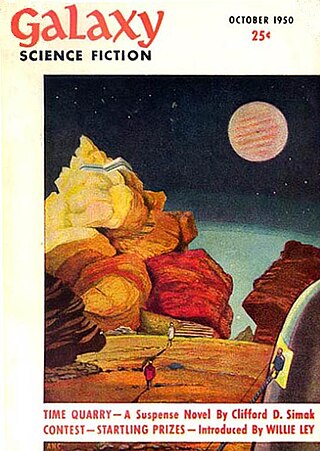
Galaxy Science Fiction was an American digest-size science fiction magazine, published in Boston from 1950 to 1980. It was founded by a French-Italian company, World Editions, which was looking to break into the American market. World Editions hired as editor H. L. Gold, who rapidly made Galaxy the leading science fiction magazine of its time, focusing on stories about social issues rather than technology.
Charles de Lint is a Canadian writer.

Ballantine Books is a major American book publisher that is a subsidiary of German media conglomerate Bertelsmann. Ballantine was founded in 1952 by Ian Ballantine with his wife, Betty Ballantine. Ballantine was acquired by Random House in 1973, which in turn was acquired by Bertelsmann in 1998 and remains part of that company.
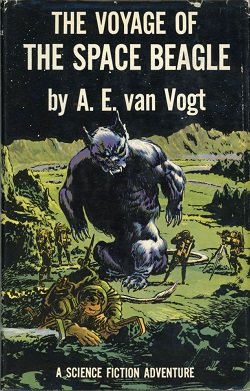
The Voyage of the Space Beagle (1950) is a science fiction novel by American writer A. E. van Vogt. An example of space opera subgenre, the novel is a "fix-up" compilation of four previously published stories:

Peter Soyer Beagle is an American novelist and screenwriter, especially of fantasy fiction. His best-known work is The Last Unicorn (1968) which Locus subscribers voted the number five "All-Time Best Fantasy Novel" in 1987. During the last twenty-five years he has won several literary awards, including a World Fantasy Award for Life Achievement in 2011. He was named Damon Knight Memorial Grand Master by SFWA in 2018.
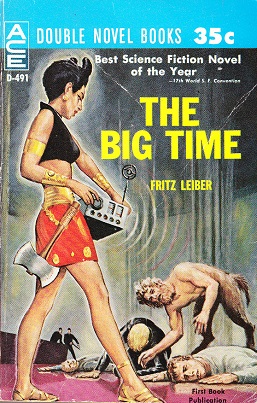
The Big Time is a short science fiction novel by American writer Fritz Leiber. Awarded the Hugo Award for Best Novel or Novelette in 1958, The Big Time was published originally in two parts in Galaxy Magazine's March and April 1958 issues, illustrated by Virgil Finlay. It was subsequently reprinted in book form several times. The Big Time is a story involving only a few characters, but with a vast, cosmic backstory.
Patricia Briggs is an American writer of fantasy since 1993, and author of the Mercy Thompson urban fantasy series.
Edgar Pangborn was an American writer of mystery, historical, and science fiction.

Richard Allen Lupoff was an American science-fiction and mystery author, who also wrote humor, satire, nonfiction and reviews. In addition to his two dozen novels and more than 40 short stories, he also edited science-fantasy anthologies. He was an expert on the writing of Edgar Rice Burroughs, and had an equally strong interest in H. P. Lovecraft. He also co-edited the non-fiction anthology All in Color For a Dime, which has been described as "the very first published volume dedicated to comic book criticism"; as well as its sequel, The Comic-Book Book.
The Dungeon series is a series of fantasy novels written under the auspices of Philip José Farmer, who wrote an introduction for each book in the series. The series was written by four different authors, each carrying on the story from the previous book.

The Last Unicorn is a fantasy novel by American author Peter S. Beagle and published in 1968, by Viking Press in the U.S. and The Bodley Head in the U.K. It follows the tale of a unicorn, who believes she is the last of her kind in the world and undertakes a quest to discover what has happened to the other unicorns. It has sold more than six million copies worldwide since its original publication, and has been translated into at least twenty-five languages.
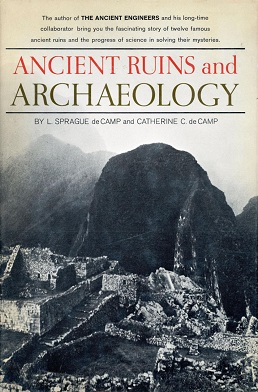
Ancient Ruins and Archaeology is a 1964 science book by L. Sprague de Camp and Catherine Crook de Camp, one of their most popular works. It was first published in hardcover by Doubleday in 1964, and reprinted under the same title by Barnes & Noble Books in 1992. The first British and paperback edition was issued by Fontana in 1972 under the title Citadels of Mystery, which was the de Camps' original working title; this title was retained by the first American paperback edition, issued by Ballantine Books in April 1973 and reprinted in February 1974. Translations into French, German and Portuguese have also appeared. Portions of the work had previously appeared as articles in the magazines Astounding Science Fiction, Fate, Frontiers, Natural History Magazine, Other Worlds Science Stories, Science Fiction Quarterly, and Travel.

The Queen of Zamba is a science fiction novel by American writer L. Sprague de Camp, the first book of his Viagens Interplanetarias series and its subseries of stories set on the fictional planet Krishna. It was written between November 1948 and January 1949 and first published in the magazine Astounding Science Fiction as a two-part serial in the issues for August and September 1949. It was first published in book form as a paperback by Ace Books in 1954 as an "Ace Double" issued back-to-back with Clifford D. Simak's novel Ring Around the Sun. This version was editorially retitled Cosmic Manhunt and introduced a number of textual changes disapproved by the author. The novel was first issued by itself in another paperback edition under the title A Planet Called Krishna, published in England by Compact Books in 1966. A new paperback edition restoring the author's preferred title and text and including the Krishna short story "Perpetual Motion" was published by Dale Books in 1977. This edition was reprinted by Ace Books in 1982 as part of the standard edition of the Krishna novels. The novel has been translated into German, French, Italian, Czech, and Polish. An E-book edition was published by Gollancz's SF Gateway imprint on September 29, 2011 as part of a general release of de Camp's works in electronic form.
Lancer Books was a publisher of paperback books founded by Irwin Stein and Walter Zacharius that operated from 1961 through 1973. While it published stories of a number of genres, it was noted most for its science fiction and fantasy, particularly its series of Robert E. Howard's Conan the Barbarian tales, the first publication of many in paperback format. It published the controversial novel Candy by Terry Southern and Mason Hoffenberg, and Ted Mark's ribald series The Man from O.R.G.Y. Lancer paperbacks had a distinctive appearance, many bearing mauve or green page edging.
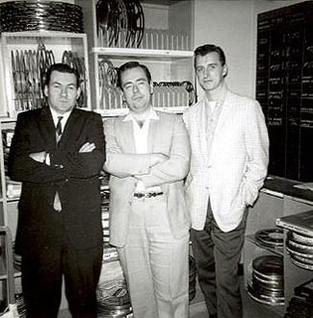
James Judson Harmon, better known as Jim Harmon, was an American short story author and popular culture historian who wrote extensively about the Golden Age of Radio. He sometimes used the pseudonym Judson Grey, and occasionally he was labeled Mr. Nostalgia.

Martians, Go Home is a science fiction comic novel by American writer Fredric Brown, published in the magazine Astounding Science Fiction in September 1954 and later by E. P. Dutton in 1955. The novel concerns a writer who witnesses an alien invasion of Earth by boorish little green men from Mars.
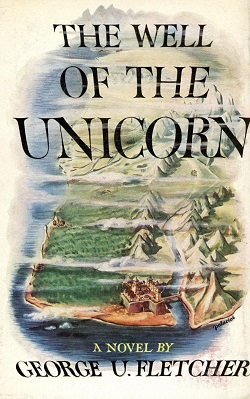
The Well of the Unicorn is a fantasy novel by the American writer Fletcher Pratt. It was first published in 1948, under the pseudonym George U. Fletcher, in hardcover by William Sloane Associates. All later editions have appeared under the author's actual name with the exception of the facsimile reprint issued by Garland Publishing in 1975 for its Garland Library of Science Fiction series. The novel was first issued in paperback in 1967 by Lancer Books, which reprinted it in 1968; subsequent paperback editions were issued by Ballantine Books. The first Ballantine edition was in May 1976, and was reprinted three times, in 1979, 1980, and 1995. The most recent edition was a trade paperback in the Fantasy Masterworks series from Gollancz in 2001. The book has also been translated into German, and into Russian in 1992.

The Incomplete Enchanter is a collection of two fantasy novellas by American writers L. Sprague de Camp and Fletcher Pratt, the first volume in their Harold Shea series. The pieces were originally published in the magazine Unknown in the issues for May and August 1940. The collection was first published in hardcover by Henry Holt and Company in 1941 and in paperback by Pyramid Books in 1960.

The Falling Astronauts is a science fiction novel by American writer Barry N. Malzberg, first published in 1971 in a paperback edition by Ace Books.
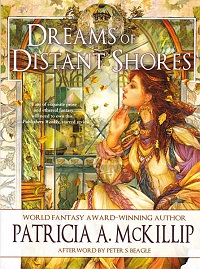
Dreams of Distant Shores is a collection of fantasy stories by Patricia A. McKillip. It was first published on ebooks by Tachyon Publications in May 2016, with the trade paperback print edition following from the same publisher in June 2016.















